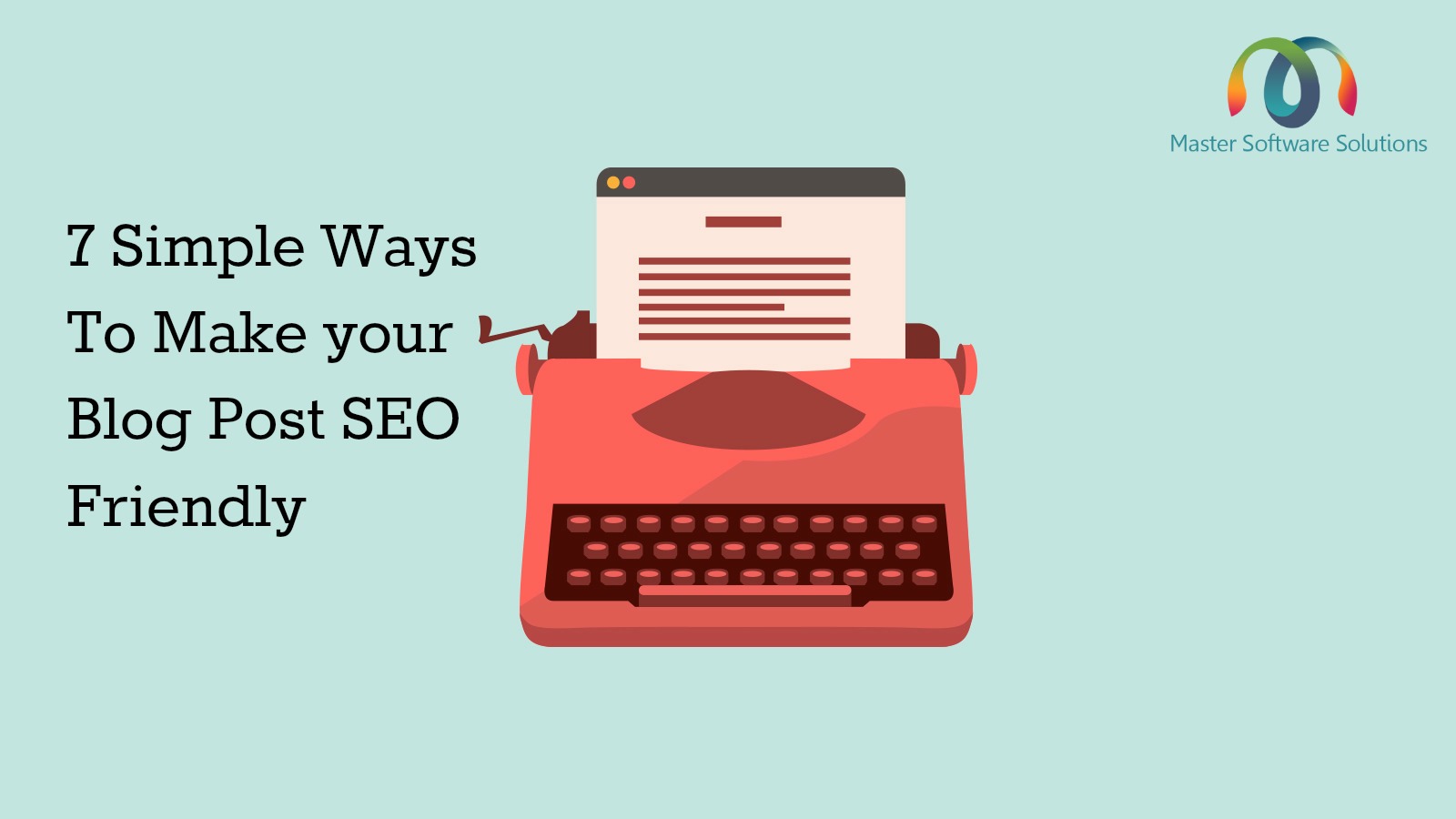7 Simple Ways To Make Your Blog Post SEO Friendly
Today’s post will focus on 7 simple ways that can help you optimize your web blog posts to the maximum and improve how your blog appears in the search engine results. So, if you want to know more, then just keep on reading.

1. Include Long Tail Keywords
It is efficient to include not 1 but at least two main long tail keywords in your blog posts. You can include more than two keywords as well, but by using two long tail keywords, you will be able to optimize them to the max. Long tail keywords are more result oriented and good for your blog’s visibility for long term because these are the kind of queries that users often type in search engine.
2. Use Keywords Wisely in your Post
The best way to place the keywords wisely in your blog post is by incorporating them in the four most important places – meta title, body, URL and meta description. These four places are crucial because search engines crawl these to know more about your blog post. Therefore, optimize the blog post data by using the keywords wisely so that you end up in top SERPs.
3. Make your Blog Responsive
A Blog’s mobile friendliness has become all the way more important after Google announced ‘Mobilegeddon’. Therefore, it is must that you improve your blog’s mobile experience as soon as possible. This includes not just responsive design but also Search Engine Optimization tactics which will ensure good rankings. Also, due to responsive design, the blog pages won’t have 2 URLs, which will result in Google acknowledging your post more.
4. Optimizing Meta Description
The power of an optimized meta description cannot be ignored. This description helps search engine to recognize your blog posts as well as helps the readers to understand what the post is all about. Therefore, this description should be precise and compelling, including the focused long tail keyword which will represent the blog post’s information. In short, this description is necessary to help users decide whether they want to read it or not.
5. Image Optimization
A blog post’s content should be a combination of text, images and videos. However, search engines can’t see the mages – they look for alt text which explains what the image is about. Moreover, in times when an image is not displayed on a browser, the search engine can still display the alt text of an image, making the user experience much better.
6. Internal Linking
Whenever possible, try to include inbound links in your blog posts as it improves the significance of your blog post content. Similarly, try to include links in your blog post to the other associated pages of your website. This creates a network of related links which helps to make a visitor stay for a longer time. The link could be made to another web page, a blog post, a video, a pdf etc.
7. Structured URLs
Your blog post and web pages must have properly structured URLs which further help your blog visitors to understand your website’s structure. The aim of the structured URLs is to help any visitor browse your website easily, while at the same time understand the page content.

